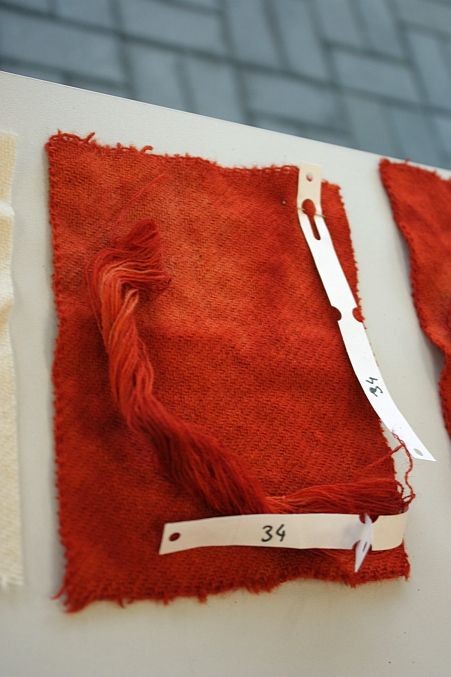Search the Blog
Latest Comments
Wheeee!
I have no clue why time is going by so fast - maybe it's being washed away by the rain outside pouring down? There's bouts of heavy rain and inbetween nice-ish weather, so there's hope we will not get drenched when we go outside to catch a bit of fresh air.
Meanwhile, there's been some writing on the madder experiment stuff, and some other things, and I have had another look at the madder swatches and their incredible spottiness...
It's a nice colour, but not one that would get praise for its crafts quality! It's still not clear how measuring it with a colour checker often enough and then taking the average will work, but I will find out. Eventually, when all will be measured and their numbers crunched...
Comments 6
Can you reduce colours to two numbers? One for the colour itself, and the other for how uniform the colour is. The uniformity number could be on a scale from 0 to 1, where 0 is totally splotchy, no two adjecent spots the same colour, and 1 is totally uniform, all spots measure to the same colour/ton/hue.
This could be measured/calculated automatically using the same sorts of programs that optical petrologists use to calculate what percentage of a rock is which mineral based on an analysis of the pixels in a photograph.
I have used one that is freeware and easy to use. Next time I am at a computer I will try to remember to email you a link, and find a paper that explains how it works. If I don't do this in the next day or so, poke me.
That should technically be possible - but it would mean using some sort of measuring grid instead of just taking a lot of measurements more or less randomly placed all over the piece. Otherwise the "adjacent spot" thing would be rather arbitrary... Or do you suggest doing a scan/photo of each piece and then making the "adjacent spot similarity" calculation automatically per softwar? That would be more feasible, I'd say...
I finally found the time to look it up. The app I used last is called Image J, which is available here: https://imagej.net/ij/
I used it for images of rock thin sections, to determine the percentage of each of the minerals visible in the image. I couldn't remember its name, so just now I tried searching for "petrology automated digital image analysis application free". One of the first hits was this blog https://digitalpathologyplace.com/8-free-open-source-software-programs-for-image-analysis-of-pathology-slides/
and the first on their list of free image analysis is Image J, which name I promptly recognised, so, clearly, the program can be used also by biologists, and thus would probably lend itself well to your determining how many distinct shades of red you have in a sample photo, and what percentage of the image is in which colour range.
I remember the program as pretty easy to figure out. However, if you don't find it intuitive, feel free to try one of the other programs the pathologists recommend. Good luck with this research side-quest!




